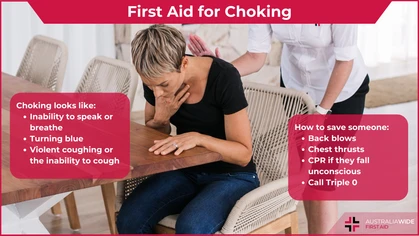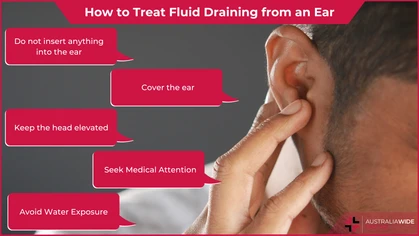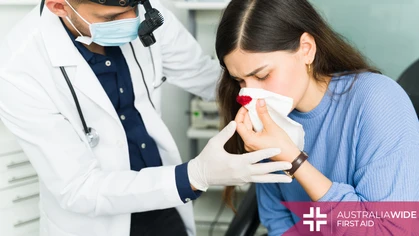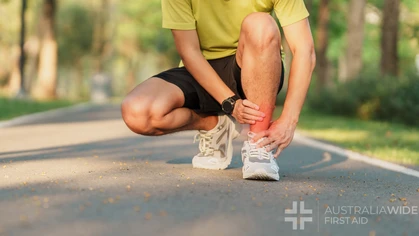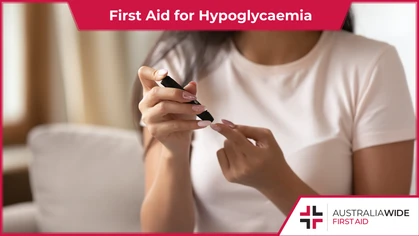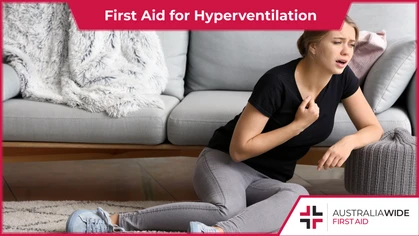First aid for heat stroke/sun stroke

How-To
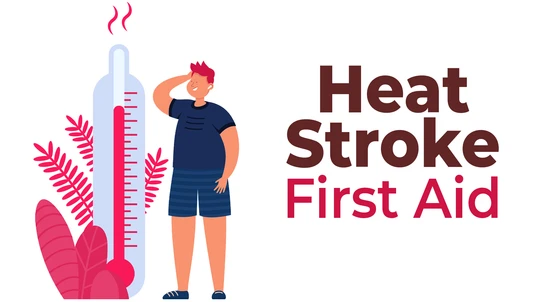
First aid treatment for heat stroke is critical. It is life-threatening and requires immediate action.
First aid treatment for heat stroke is critical. Heat stroke is a life-threatening medical emergency that requires immediate action. It is the most serious form of heat-induced illness. The causes of heat stroke usually result from working or exercising in a hot environment, indoors as well as outdoors. Warning signs are usually present that heat stroke is looming. It is crucial not to ignore these warning signs. Core body temperature may rise to a dangerously high level within only 10 to 15 minutes. Left untreated, heat stroke can quickly damage the brain, heart, kidneys and muscles. Immediate, active intervention is necessary to avoid coma and death. The aim of administering first aid treatment is to rapidly cool down core body temperature while waiting for emergency services to arrive.What is heat stroke?
Heat stroke, also known as sun stroke, is a condition by which the body itself overheats. The body’s temperature regulation centre in the brain ceases to function properly. With life-threatening core temperatures above 40.6 º C, heat stroke is also known as ‘core temperature emergency.’ The longer treatment is delayed, the greater the risk of serious complications or death. Heat stroke occurs most during the summer months and on days with high temperatures and/or high humidity, especially when also engaging in vigorous activity. In the type of heatstroke known as non-exertional (classic) heat stroke, exposure to a hot environment leads to a rise in core body temperature. This is more likely to be the case in children or adults spending time in the sun without any sun protection such as hats and umbrellas. It is also more common in older adults and people with chronic illnesses. Exertional heat stroke is where core body temperature has been brought on by intense exercising or working in hot weather or environment either indoors or outdoors. In either type, the risk of heat stroke increases if clothing prevents sweat from evaporating easily to cool the body. So too if the person fails to drink enough water to replenish fluids lost through perspiration. Drinking alcohol can also affect the body's ability to regulate temperature. The body’s ability to cope with extreme heat is linked to the strength of the central nervous system. The central nervous system is not fully developed in the very young and it’s often deteriorating in adults over 65. Both age groups usually find it difficult to stay hydrated, which also increases risk. Sudden exposure to hot weather, such as during a heat wave or travel to a hotter climate, will also increase the risk of heat stroke. Some medications affect the body's ability to stay hydrated and respond to heat. Care needs to be taken in hot weather by people who take vasoconstrictors (medications that narrow blood vessels), beta blockers (blocking adrenaline to regulate blood pressure), diuretics (reduce sodium and water in the body), or antidepressants or antipsychotics. Stimulants for ADHD (attention-deficit/hyperactivity disorder), as well as amphetamines and cocaine also increase the risks for heat stroke. Certain chronic illnesses, such as heart or lung disease, could increase the risks of heat stroke. So too can obesity, being sedentary, as well as having had heat stroke previously.What are the symptoms of heat stroke?
The earliest signs of heat stroke appear as changes in the functioning of the brain and the nervous system. All body organs are affected in this perilous condition.- High body temperature – core body temperature 40° C (104° F) or higher.
- Altered mental state or behaviour – the person may appear confused, agitated, irritable, delirious, or have slurred speech, seizures, or lapse into coma.
- Sweating – in heat stroke brought on by hot weather, the skin will feel hot and dry in heat stroke brought on by strenuous exercise, the skin may feel dry or slightly moist.
- Skin reddening as body temperature increases.
- Nausea & vomiting.
- Breathing may be rapid & shallow.
- Heart racing – the pulse may increase significantly, placing stress on the heart as the body tries to deal with the heat.
- Headache.

How to treat heat stroke<
Early recognition together with prompt, effective heat stroke first aid is critical.- Strip the casualty’s clothing, taking care to maintain their respect, and move them to cooler surroundings.
- Soak with water – cold shower, spray with garden hose, sponge with cool water, fan while misting with cool water. If ice is available, apply wrapped ice packs to head, neck, groin and armpits.
- Fan vigorously, using whatever you can grab, e.g. a printed publication, a flipper (swimmer’s fin), a clipboard. While doing so, mist with cool water.
- Immerse. The most effective cooling means will be cool or ice-water immersion. Immerse the casualty up to their neck in a cool or ice bath (must be held at all times by multiple people to ensure airway) OR
- Cover all of their body with ice-soaked towels, swapping them frequently with fresh cold towels.
- Drink cool water or sports drink if fully conscious and able to swallow.
- Call 000 or 112 for emergency services but do so only when first aid cooling has been implemented.

How long does heat stroke last?
Recovery, following quick and effective heat stroke treatment, will usually take a day or two in hospital. Generally there are few problems afterwards, although some heat stroke sufferers may be left with increased sensitivity to hot weather. If organ damage is detected, recovery from heat stroke will be considerably longer. It may take 2 months to a year. This damage is caused by swelling and ranges from fair to poor. As complications increase, the prognosis changes dramatically for the worse. When permanent damage has impacted the brain, the lungs, liver, kidneys, the effects will be long-term.How to prevent heat stroke
Heat stroke can be prevented. The body has some natural defence mechanisms against excessive heat — sweating dissipates heat through the skin and through lung moisture evaporation. Precautions in hot weather are nevertheless recommended.- Wear loose-fitting, light-coloured clothing.
- Stay well-hydrated. If you empty your bladder only infrequently, or your urine is concentrated, you need to increase your fluid intake. Avoid alcohol. Drink oral rehydration ‘sports drinks’.
- Avoid hot areas exposed to the sun & avoid sitting in a parked car (a common cause of heat stroke in children).
- Avoid strenuous activity during the warmest times of the day. Where heat stroke is a concern, training, long-distance runs & playing sports in hot weather are best avoided.
- Medications, such as diuretics, stimulants, and sedatives, can increase the risk of heat stroke. Check with your pharmacist or doctor.
- If you notice muscle cramps or feel weak, stop the activity immediately & cool down.
- If you go to a hotter climate, give yourself time to acclimatise by limiting outdoor activities for a few days or more if you have risk factors for heat-related illness.
- During sustained hot weather, air conditioning is more effective than fans to cool down and lower humidity.

Originally published at
https://www.australiawidefirstaid.com.au/resources/heat-stroke-first-aid
as part of the Australia Wide First Aid Articles Library
